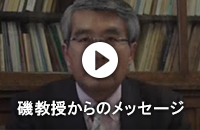The subject of our study is consistently the epidemiology and the prevention against lifestyle-related diseases that include cardiovascular diseases. We have tried to make new evidence of risk factors for Japanese people's cardiovascular diseases and assess-ment of preventive measures medically healthcare-economically based on epidemiolog-ical researches on local residents, especially with long-term follow-up examinations and interventional studies.
The major areas taken countermeasures are Minami Takayasu Area at Yao City in Osaka Prefecture with a population of 23 thousand, Ikawa Town in Akita Prefecture with 6 thousand and Kyowa Area at Chikusei City in Ibaraki Prefecture with 17 thou-sand, where we have collaborated in prevention of lifestyle diseases and studies of epi-demiology with the Osaka Medical Center for Health Science and Promotion which was organized as the Mass-screening Department in Osaka Medical Center for Cancer and Cardiovascular Diseases.
At Minami Takayasu Area, Yao City, Osaka Pref., an independent anti-adult-diseases community was formed by local residents in 1963. We have performed several activities with them every year to promote to have a physical checkup, hold briefing sessions about the results, edit newsletters, give cooking classes and walking tours, and so on. The incidence of stroke decreases by half of both men and women aged between 40 and 69, by one fifth of men and one third of women aged more than 70 compared with the 1960's.
At Ikawa Town, Akita Pref., in 1963, everyone in the town was involved in constructing a structure with the town government, the medical association, the district organizations, the health center and other organizations to promote stroke prevention. We have pushed strict management of hypertension by physical checkup and the following health direction mainly. As a result, the consultation rate of physical checkup is kept higher percentage, the average of blood pressure and the number of hypertension people decrease much more compared with the control area in the same prefecture. The re-duction in the incidence of stroke among men is 75 percent, apparently much bigger than 29 percent at the control area, it is showed as well.
At Kyowa Area, Chikusei City, Ibaraki Pref., the countermeasures focused on pre-venting hypertension have been taken in cooperation with the city government, the medical association, local residents' organizations, schools and the board of education, the foods association, the health center and Ibaraki Health Service Association since 1982. We have concentrated our works upon the campaign for health education covering all the local residents which emphasizes the importance of salt reduction and well-balanced meals for primary prevention, the recommendation of visit to local medical institutions with follow-up review and the health education for needed people who are early found hypertensive by checkup for primary and secondary prevention, the improvement in a critical care system for stroke together with the medical association for secondary prevention, and the local care and the recurrence prevention of stroke patients who require nursing care with introducing a local care system for tertiary prevention. These countermeasures during twenty years led reduction in salt intake on residents, improvement in hypertension management with antihypertensive drugs, decline in blood pressure without medicine, 40 percent decrease in the incidence of stroke and the prevalence of stroke bedridden and cap on 5 percent increase in medical ex-penses, we can save 85 million yen per year if capped on 5 percent increase in expenses of the national health service.
Nowadays, amid calls for the cooperation with health, medical care and welfare, these preventive measures against lifestyle-related diseases can be said some of the few good examples. As Japan is facing the aged society never seen in the world, the importance of preventing and managing lifestyle diseases is getting higher, in public health and clin-ical practice as well. The prevention of lifestyle diseases and the epidemiological studies are long-term works, which require both to hand down tradition of public health and to introduce new studies. I come and go between basic and applied researches of epidemi-ology still now on, even with continuing collaborations, after going on an overseas study program at the public health and epidemiology department in the University of Min-nesota for two years and conducting studies at the laboratory Channing in Harvard Medical School for one year. It is important to be conversant with overseas epidemiology and polish the method up, however, it should be the foundations finally to continue preventive activities and studies in Japan.
I think the studies on "Epidemiology for Health" should be important in the future, how we live long with good health in the aged society not only by prevention of one disease, what action we take in the gap of health levels such as seen in urban health problems, with continuing the existent studies of pathogenic factors in lifestyle diseases and expending practical preventive measures. Therefore, we need to advance comprehensive studies on social-psychological and economical factors, physical factors and genetic factors in lifestyle. Of course, the collaborative works across several fields are required in medicine, health, nursing science, nutrition, pharmacy, sociology, psychology, praxeology, engineering, economics, communication and other fields, and the participation of graduate students, research students and researchers who come from various fields is necessary.
The statement of our Osaka University is "Live Locally Grow Globally". We will advance practical activities, studies and educations of public health in deeper cooperation with administration organs of Osaka Pref., health centers, the Osaka Medical Center for Health Science and Promotion, Osaka Medical Center for Cancer and Cardiovascular Diseases, Osaka Prefectural Institute of Public Health and other institutes.
It is said that the 21st century is the period for genomic medicine, regenerative medicine and preventive medicine. It is the field still developing, and then worthwhile. Please feel free to contact us, whenever and whoever is interested in public health and preventive medicine!
Greeting from Prof.Iso







